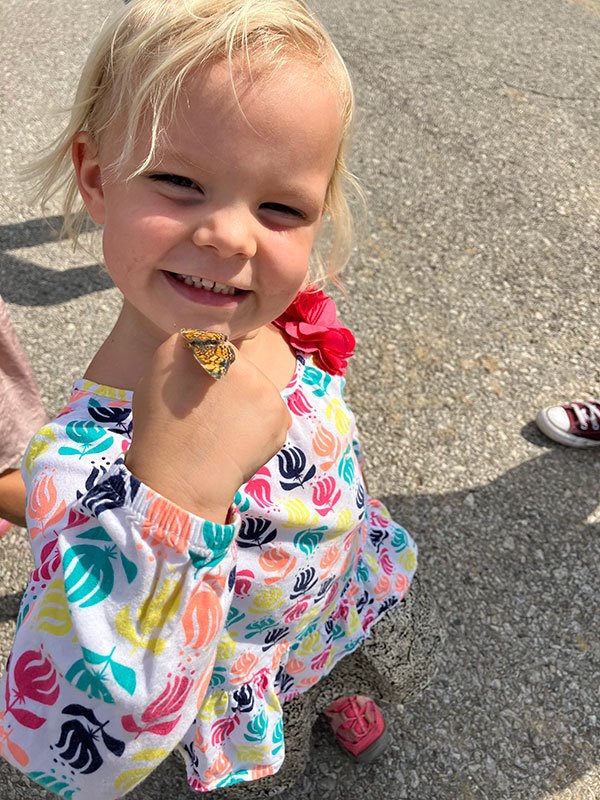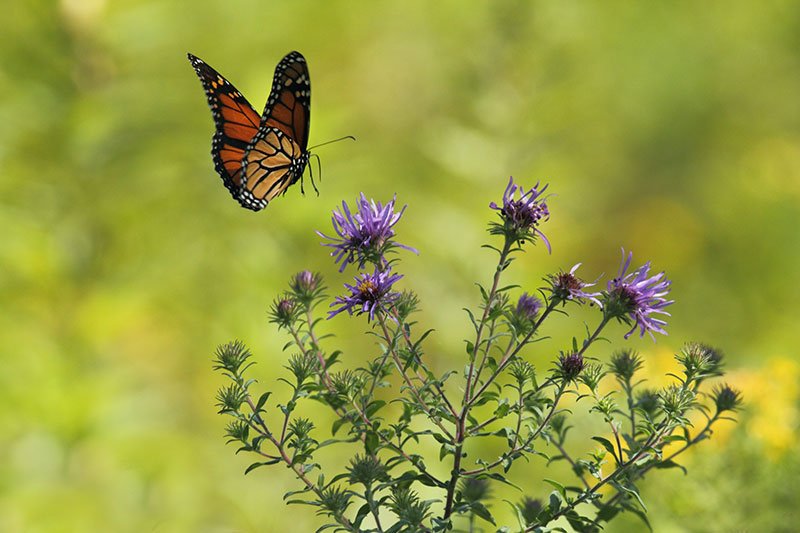We Went Monarch Tagging
OceanAtoll, public domain, via Wikimedia Commons
Hey there, Creation Explorer!
Every fall, orange and black monarch butterflies make an epic migration from across the US and parts of Canada all the way down to a forest in the mountains of central Mexico for their winter hibernation. As you explore God’s creation this fall, you might spy a monarch or two on their way south—it’s a beautiful sight!
Where did all the monarchs go?
Recently, we joined a monarch tagging event at a local park. Armed with butterfly nets, we searched goldenrod and aster fields for monarchs so we could attach lightweight stickers for scientists who track monarch migrations . . . but we only saw one monarch the whole hunt (and no one was able to catch it!). Where did all the monarchs go?
Well, monarch butterfly populations have been declining, so much so that last year they were placed on the endangered species list (though this year they were taken off and listed as “vulnerable to extinction”). This means there are fewer monarchs, so it’s becoming less common to spot one fluttering down to Mexico.
You can help the monarchs by planting milkweed in your yard.
But you can help! After wintering in Mexico, monarch butterflies will begin their trip back north, and they’ll be ready to lay their eggs. And they’ll only lay their eggs on one plant: milkweed. Once those eggs hatch, hungry little caterpillars will munch the milkweeds leaves, ingest the milkweed toxins (which makes adult monarchs toxic to birds and other animals), and grow. Once those caterpillars are fully grown, they’ll develop a chrysalis and emerge as monarch butterflies, ready to continue the journey north as the next generation. Several generations later those butterflies will make the trip back to Mexico.
So you can help the monarchs by planting milkweed in your yard. Not only is milkweed delicious (to them) caterpillar food, but the pink, orange, or white blooms are a beautiful addition to your garden. Fall is the best time to plant milkweed seeds, which need the cold winter months to prepare the seeds to sprout in the spring.
Milkweed Planting Tips:
- There’s lots of variety within the milkweed kind: rose milkweed, common milkweed, swamp milkweed, butterfly milkweed, spider milkweed, and more. Different varieties produce different colored blooms.
- Don’t worry if you don’t see blooms next summer; it may take two or even three years for your milkweed to bloom.
- Each milkweed species likes a particular type of soil and moisture level, so be sure to check which variety will do best in your yard.
- Milkweed is native to the United States, but certain varieties only grow natively in certain areas. Always check a native plant range map before planting anything, including milkweed, to make sure you aren’t planting a species where it doesn’t belong, as it could become invasive.
God cares about what he’s made, even the little butterflies, and we should too!
Milkweed planting and then hunting for caterpillars is a fun family activity, but it’s more than that—it’s a way of being a good steward (caretaker) of God’s creation by looking after what he’s made. Yes, God cares about what he’s made, even the little butterflies, and we should too!
Well, we’re off on another adventure (we’ve got milkweed to plant!). Until next time, let’s remember God’s command to have dominion over his creation and be good stewards:
Be fruitful and multiply and fill the earth and subdue it, and have dominion over the fish of the sea and over the birds of the heavens and over every living thing that moves on the earth. (Genesis 1:28)
Bye!
- © 2025 Answers in Genesis
- Privacy Policy
- Contact
- About




